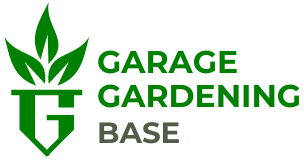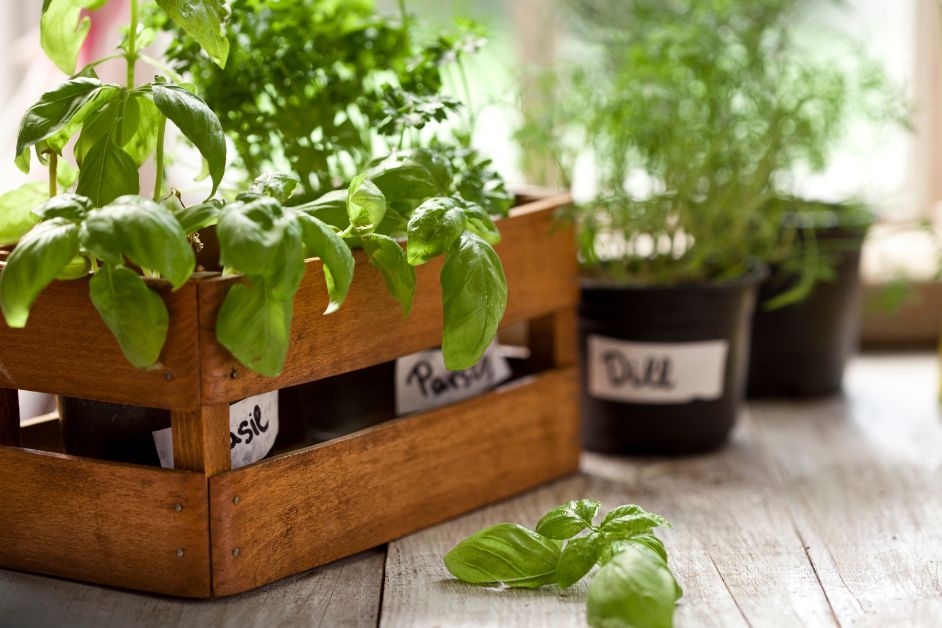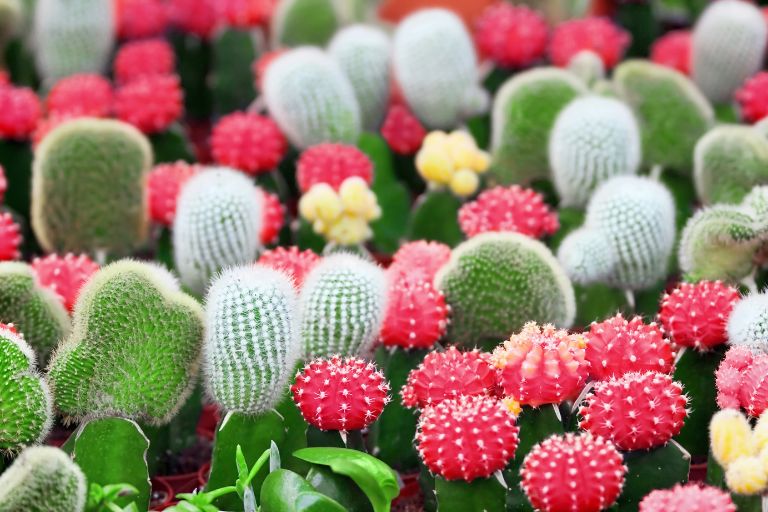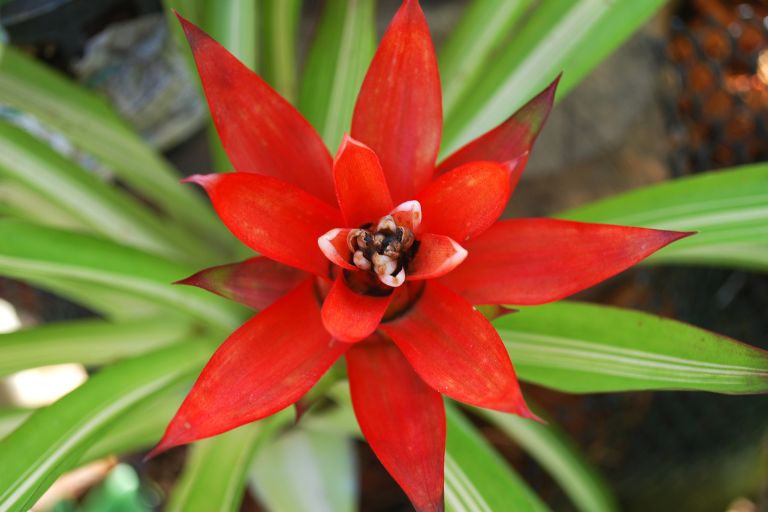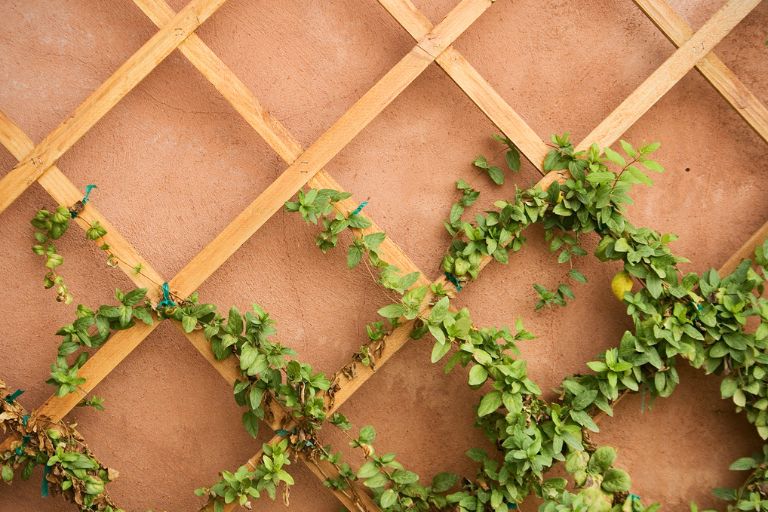Garage Gardening: How to Transform Your Space into a Composting Haven
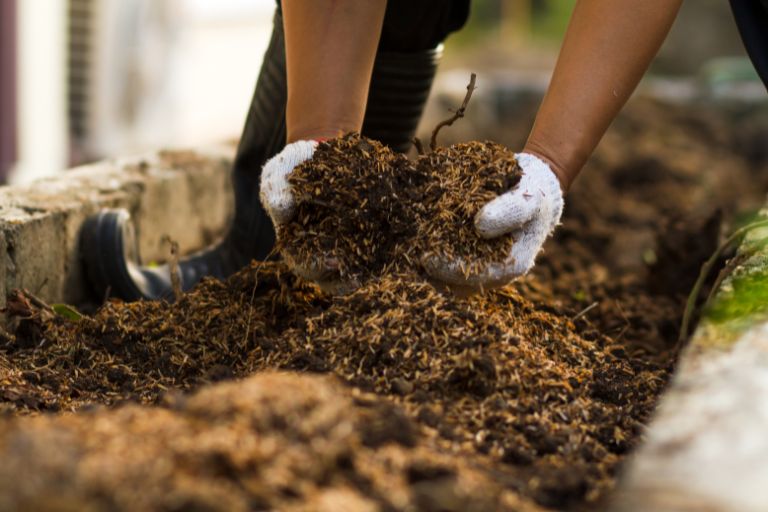
In today’s world, there’s a palpable shift towards sustainable living practices as people become more aware of their impact on the environment. From reducing plastic use to embracing renewable energy, people are looking for ways to go easy on the planet. At the heart of this movement is composting – a simple yet powerful practice that turns organic waste into a valuable resource. In this article, we’ll explore the importance of composting as a cornerstone of sustainable living and introduce the concept of garage composting as a convenient and efficient way to reduce waste, enrich soil and promote environmentally friendly gardening practices.
With climate change, pollution and resource depletion on the horizon, there’s a growing urgency to adopt sustainable lifestyles. People are increasingly aware of the impact of their consumption habits on the environment and are actively seeking alternatives that minimise waste and promote biodiversity. Composting has emerged as a key component of this sustainable living movement, offering a simple yet effective solution to organic waste management. By diverting kitchen scraps, garden waste and other organic materials from landfill, composting helps reduce methane emissions and conserves valuable landfill space.
While traditional backyard composting is popular in suburban areas, it may not be feasible for everyone, especially city dwellers with limited outdoor space. This is where garage composting comes in. By using available space in garages or even small outdoor areas such as balconies or patios, individuals can create their own composting systems. Garage composting offers a convenient solution for those who want to reduce waste and enrich their soil without the need for a backyard garden. With the right setup and maintenance, garage composting can produce nutrient-rich compost that nourishes plants, improves soil health and promotes sustainable gardening practices.
Benefits of Garage Composting
Composting offers a wide range of environmental benefits that contribute to a more sustainable and environmentally friendly world. Here are some of the key benefits:
Reduce landfill waste – Organic waste, such as food scraps, yard trimmings and paper products, makes up a significant portion of municipal solid waste. When organic waste is landfilled, it decomposes anaerobically (without oxygen) and produces methane, a potent greenhouse gas. Composting diverts organic waste from landfills, reducing the volume of waste to be disposed of and reducing methane emissions. By composting organic material instead of sending it to landfill, we can significantly reduce the environmental impact of waste disposal.
Minimising greenhouse gas emissions – Landfills are one of the largest man-made sources of methane emissions, a greenhouse gas that is approximately 25 times more potent than carbon dioxide in terms of its global warming potential over a 100-year period. Composting organic waste aerobically (with oxygen), rather than allowing it to decompose anaerobically in landfills, helps to minimise methane emissions. In addition, composting sequesters carbon in the soil, further reducing greenhouse gas emissions by offsetting the release of carbon dioxide.
Preserving natural resources – Composting returns valuable nutrients to the soil, enriching it with organic matter, nitrogen, phosphorus and potassium. This nutrient-rich compost improves soil structure, increases water retention and promotes healthy plant growth. By using compost to amend soil instead of synthetic fertiliser, we reduce the need for chemical inputs and minimise nutrient run-off that can pollute waterways and damage ecosystems. Composting also conserves natural resources by reducing the need for virgin materials such as peat moss and synthetic fertiliser, which are often mined or produced using energy-intensive processes.
Composting offers significant environmental benefits by reducing landfill waste, minimising greenhouse gas emissions and conserving natural resources. By incorporating composting into our waste management practices, we can play a vital role in mitigating climate change, preserving ecosystems and promoting a more sustainable future for generations to come.
Compost plays a vital role in improving soil health, enhancing plant growth and increasing garden productivity through its many benefits:
Soil structure and fertility – Compost is rich in organic matter, which helps to improve soil structure by increasing its ability to hold water and nutrients. The humus in compost acts as a sponge, holding moisture in sandy soils and improving drainage in clay soils. Compost also adds essential nutrients to the soil, such as nitrogen, phosphorus and potassium, which are essential for plant growth. This nutrient-rich soil provides a healthy environment for beneficial micro-organisms, earthworms and other soil organisms, further improving soil fertility.
Nutrient availability – Compost releases nutrients slowly and steadily over time, providing a consistent source of nutrients for plants. This gradual release of nutrients helps prevent nutrient leaching and run-off, minimising the risk of water pollution. The organic matter in compost also acts as a reservoir for nutrients, holding them in the soil and making them more readily available to plants when needed. As a result, plants grown in compost-amended soil are healthier, more resilient to stress and better able to resist pests and disease.
Microbial activity – Compost is teeming with beneficial micro-organisms, including bacteria, fungi and protozoa, which play a crucial role in nutrient cycling and soil health. These micro-organisms break down organic matter, releasing nutrients in a form that plants can absorb. They also help to suppress harmful pathogens and diseases, creating a more balanced and resilient soil ecosystem. By encouraging microbial activity, compost increases soil biodiversity and supports the growth of healthy, vibrant plants.
Water retention and aeration – Compost improves the water-holding capacity of the soil, reducing the frequency of irrigation and conserving water. At the same time, compost-amended soil is well aerated, allowing roots to penetrate easily and access oxygen for respiration. This optimum balance of water retention and aeration ensures that plants receive the moisture and oxygen they need for healthy growth. In addition, the crumbly texture of compost-amended soil facilitates root development and nutrient uptake, further enhancing plant vigour and productivity.
Garage composting offers a convenient and practical solution for urban dwellers or people with limited outdoor space who want to adopt sustainable living practices. Unlike traditional backyard composting, which may require a large outdoor space and specific environmental conditions, garage composting can be easily adapted to fit within the confines of a garage, balcony or even a small patio. This accessibility makes it an ideal option for those living in urban environments where outdoor space is at a premium.
One of the key benefits of garage composting is its flexibility and adaptability to different living situations. Whether you live in an apartment, condo or townhouse, garage composting allows you to enjoy the benefits of composting without the need for a backyard garden or outdoor compost pile. With the right equipment, such as a compact compost bin or vermicomposting system, you can turn organic kitchen scraps and other waste into nutrient-rich compost right in your garage.
In addition, garage composting offers year-round accessibility and convenience, regardless of weather conditions or seasonal changes. Because the garage environment is typically protected from the elements, composting can continue uninterrupted throughout the year, allowing you to maintain a steady supply of compost for your indoor plants, container gardens or small outdoor projects. This continuous composting process eliminates the need to rely on municipal composting programmes or dispose of organic waste in landfills, empowering urban dwellers to take control of their waste management practices and contribute to a more sustainable future.
Setting Up a Garage Composting System
There are several composting methods to choose from in a garage environment, each with its own advantages and considerations:
Worm Composting (Vermicomposting)
Description – Vermicomposting uses worms, typically red wigglers or Eisenia fetida, to break down organic waste into nutrient-rich compost.
Suitability for garage – Vermicomposting is well suited to garage environments due to its compact size and minimal odour. A worm bin can easily fit in a corner of the garage without taking up much space.
Process – Organic waste, such as kitchen scraps and shredded paper, is placed in the worm bin along with bedding material, such as shredded newspaper or coconut coir. The worms consume the organic matter, breaking it down into nutrient-rich castings (worm castings) and a liquid fertiliser known as worm tea.
Considerations – Ensure proper ventilation and moisture control in the worm bin to maintain optimal conditions for the worms. Avoid adding acidic or citrus foods, meat, dairy products or oily foods as these may attract pests or harm the worms.
Bokashi Composting
Description – Bokashi composting is an anaerobic fermentation process that uses beneficial microbes to break down organic waste.
Suitability for Garage – Bokashi composting is ideal for the garage as it requires minimal space and can be done in an airtight container.
Process – Organic waste is placed in a Bokashi container along with a bran-based inoculant containing effective microorganisms (EM). The waste is then fermented for a few weeks, during which time it undergoes anaerobic decomposition. Once fermented, the bokashi compost can be buried in the ground or added to a traditional compost bin for further decomposition.
Considerations – Bokashi composting produces a pickled or sour smell during fermentation, which may not be suitable for all garage environments. Ensure that the bokashi bin is airtight to prevent odour and maintain proper fermentation conditions.
Aerobic composting with a bin or tumbler
Description – Aerobic composting relies on oxygen-loving bacteria to break down organic waste into compost.
Suitable for garage – Aerobic composting with a bin or tumbler is a versatile option for garages as it can accommodate larger amounts of organic waste and requires minimal maintenance.
Process – Organic waste is placed in a compost bin or tumbler along with brown materials such as dried leaves or shredded paper. The compost pile is periodically turned or aerated to introduce oxygen and facilitate decomposition. Within a few months, the organic waste will be transformed into nutrient-rich compost suitable for use in the garden.
Considerations – Ensure proper aeration and moisture levels in the compost pile to encourage aerobic decomposition. Regular turning or tumbling of the compost will help maintain optimum conditions and speed up the composting process.
Garage composting offers a range of options, including vermicomposting, bokashi composting and aerobic composting using a bin or tumbler. Each method has its own unique characteristics and considerations, allowing individuals to choose the approach that best suits their space, lifestyle and composting goals.
Choosing the right composting method for your garage depends on a number of factors, including available space, desired composting rate and personal preferences. Here are some practical tips to help you choose the best composting method:
Evaluate the space available – Consider how much space you have in your garage for composting. If you have limited space, options such as vermicomposting or bokashi composting, which require smaller containers, may be more suitable. Alternatively, if you have more space, aerobic composting with a bin or tumbler will allow for larger piles of compost.
Assess the composting rate – Decide how quickly you want to produce compost. Worm composting and bokashi composting tend to produce compost more slowly than aerobic composting with a bin or tumbler. If you’re patient and don’t mind waiting a few months for compost, vermicomposting or bokashi composting may be for you. However, if you prefer faster results, aerobic composting with a bin or tumbler may be a better option.
Consider odour and maintenance – Think about your tolerance for odours and the level of maintenance you’re prepared to undertake. Worm composting and bokashi composting tend to produce less odour and require minimal maintenance compared to aerobic composting with a bin or tumbler, which may require regular turning or tumbling. If you’re concerned about odour or prefer a low-maintenance option, vermicomposting or bokashi composting may be preferable.
Consider your personal preferences – Consider your personal preferences and lifestyle. Some people enjoy the hands-on nature of aerobic composting with a bin or tumbler, while others prefer the simplicity of vermicomposting or bokashi composting. Consider what best suits your preferences and lifestyle to ensure a positive composting experience.
Research each method – Take the time to thoroughly research each composting method to understand its requirements, benefits and limitations. Consider factors such as the types of organic waste that can be composted, the optimal conditions for composting and the end products produced. This will help you make an informed decision based on your specific needs and circumstances.
By carefully considering available space, desired composting rate, odour and maintenance preferences, and personal preferences, you can choose the right composting method for your garage that meets your goals and lifestyle. Whether you choose worm composting, bokashi composting or aerobic composting with a bin or tumbler, garage composting is a convenient and sustainable way to reduce waste and produce nutrient-rich compost for your garden.
Creating an effective garage composting system requires several essential components to ensure efficient decomposition and nutrient-rich compost production. Here are the key elements:
Compost bins or containers
Choose a compost bin or container that fits the space available in your garage and your composting method. Options include:
Worm bin – A container designed specifically for vermicomposting, usually shallow and well-ventilated, with bedding material for the worms to thrive.
Bokashi Bin – An airtight container equipped with a drainage system to collect liquid by-products, such as a spigot, to facilitate anaerobic fermentation.
Aerobic Compost Bin or Tumbler – A container with ample ventilation or a tumbling mechanism to promote aerobic decomposition, available in various sizes and designs to accommodate different volumes of organic waste.
Carbon-rich (brown) and nitrogen-rich (green) materials
Carbon-rich (brown) materials provide structure and balance to the compost pile, while nitrogen-rich (green) materials provide essential nutrients and promote microbial activity. Examples include:
Browns – Shredded newspaper, cardboard, dried leaves, straw or woody materials such as sawdust or wood chips.
Greens – Fruit and vegetable waste, coffee grounds, tea leaves, grass clippings, fresh plant cuttings or manure (from herbivores only).
Aeration tools
Aeration is essential to ensure proper oxygen levels in the compost pile and to promote aerobic decomposition. Depending on your composting method, consider the following aeration tools:
Pitchfork or Compost Turner – For aerobic composting in bins or tumblers, a pitchfork or special compost turner allows you to mix and aerate the compost pile, ensuring even decomposition and preventing anaerobic conditions.
Worm bedding – For vermicomposting, bedding materials such as shredded newspaper, cardboard or coconut coir provide aeration and habitat for worms, promote oxygen exchange and prevent compaction.
Optional Additional Components
Moisture Meter – To monitor the moisture level in the compost pile and ensure that it remains moist but not waterlogged.
Thermometer – For aerobic composting, a compost thermometer allows you to monitor the internal temperature of the compost pile to ensure it reaches and maintains the optimum temperature range for decomposition.
Cover or lid – To cover the compost pile and regulate moisture levels, temperature and pest control.
By assembling these essential components, you can create a functional and efficient garage composting system that turns organic waste into nutrient-rich compost for your garden, all within the confines of your garage.
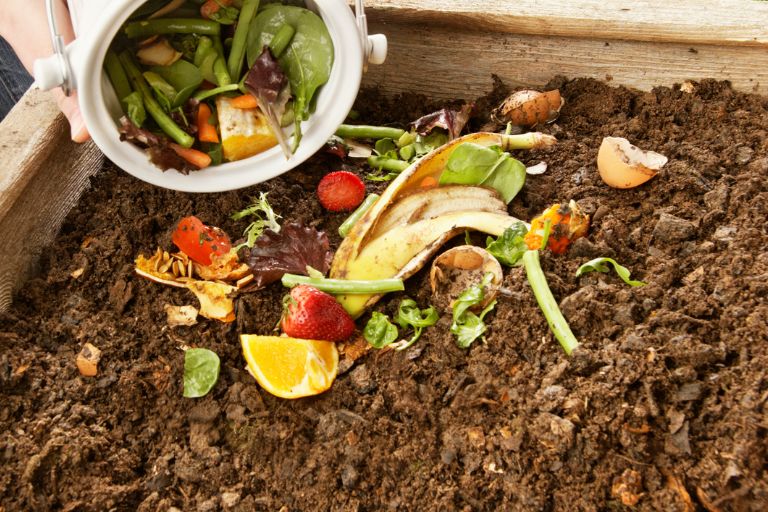
Managing and Maintaining Compost
Maintaining proper composting conditions is essential for the success of your garage composting system. Here’s a guide to the key aspects of maintaining optimal composting conditions:
Maintain moisture levels
– Aim for a moisture level in your compost pile that resembles a damp sponge – moist but not waterlogged.
– Check the moisture level regularly, especially in dry or hot weather, and adjust if necessary by adding water or dry materials to achieve the right balance.
– Cover the compost pile with a lid or tarpaulin to prevent excessive moisture loss during rainy or hot weather, or to prevent saturation during heavy rainfall.
Turn or aerate the compost regularly
– Turning or aerating the compost pile regularly promotes oxygen circulation, which is essential for aerobic decomposition, and prevents anaerobic conditions that can lead to unpleasant odours.
– For aerobic composting in bins or tumblers, turn or tumble the compost pile every 1-2 weeks to mix the materials and aerate the pile.
– In vermicomposting systems, gently fluff the bedding material and mix the compost pile regularly to ensure even distribution of organic waste and to prevent compaction.
Balancing green and brown material
– Achieving the right balance of green (nitrogen-rich) and brown (carbon-rich) materials is crucial to successful composting.
– Aim for a carbon to nitrogen (C:N) ratio of about 25-30 parts carbon to 1 part nitrogen for optimal decomposition.
– Add green materials such as kitchen scraps, grass clippings or fresh plant trimmings for nitrogen and brown materials such as shredded newspaper, cardboard or dried leaves for carbon.
– Layer green and brown materials in the compost pile, alternating between them to create a balanced mix and prevent odour or decomposition problems.
– Monitor the compost pile regularly and adjust the ratio of green to brown materials as necessary to maintain a balance and promote efficient decomposition.
Troubleshooting common composting problems is an essential part of maintaining a healthy and productive compost pile in your garage. Here are some common problems you may encounter and practical solutions for dealing with them:
Odour problems
Cause:
Strong, unpleasant odours can result from anaerobic conditions in the compost pile caused by insufficient oxygen circulation or excessive moisture.
Solution:
-Increase aeration by turning or aerating the compost pile more frequently to promote oxygenation.
– Ensure proper moisture balance by adjusting the moisture levels in the compost pile, aiming for a moist, spongy consistency.
– Avoid adding odour-causing materials such as meat, dairy products or oily foods, which can attract pests and contribute to unpleasant odours.
Pest infestation
Cause:
Pests such as fruit flies, ants or rodents can be attracted to the compost pile if it contains food waste or if the composting process is not properly managed.
Solution:
– Cover food scraps with a layer of brown material or bury them deeper in the compost pile to deter pests.
– Ensure that the compost pile is properly enclosed or covered to prevent access by rodents or larger pests.
– Consider adding beneficial organisms such as nematodes or predatory insects to the compost pile to naturally control pest populations.
Slow decomposition rates
Cause:
Slow decomposition rates can be caused by a lack of sufficient moisture, inadequate aeration or an imbalance between green and brown material.
Solution:
– Check the moisture level in the compost pile and adjust as necessary to maintain a proper moisture balance.
– Increase aeration by turning or aerating the pile more frequently to encourage decomposition.
– Ensure a balanced mix of green and brown materials by adding more nitrogen-rich (green) materials if decomposition rates are slow.
– Shred or chop larger materials into smaller pieces to facilitate decomposition and speed up the composting process.
Unwanted plant growth (weeds)
Cause:
Weed seeds present in the compost pile or introduced with organic material can germinate and cause unwanted plant growth.
Solution:
– Avoid adding weeds with seeds or mature plants to the compost pile to prevent weed seeds from germinating.
– Turn or aerate the compost regularly to disrupt weed growth and expose weed seeds to heat and decomposition.
– Use compost as mulch in the garden to ensure that weed seeds are buried below the surface and cannot germinate.
You can maintain a healthy and productive compost pile in your backyard by addressing these common composting problems early and implementing practical solutions. Consistent attention to composting conditions, proper management practices and proactive problem solving will ensure successful composting and the production of nutrient-rich compost for your garden.
Monitoring the progress of your compost is essential to ensure that your composting efforts are on track and that you are producing high quality compost for your garden. Here’s why it’s important and how to tell when your compost is ready to use:
Monitoring decomposition – Regular monitoring allows you to observe the progress of decomposition in the compost pile. You can visually inspect the compost pile to see how well the materials are decomposing and if any adjustments need to be made, such as adding more green or brown materials to balance the mix.
Monitor the temperature – Composting generates heat as organic materials break down. Monitoring the temperature of the compost pile can give an indication of the activity of the beneficial micro-organisms responsible for decomposition. A properly functioning compost pile will heat up as microbial activity increases and then gradually cool down as decomposition nears completion.
Moisture management – Monitoring the moisture level in the compost pile is essential to ensure optimum conditions for decomposition. Compost should be moist, like a wrung out sponge, to facilitate microbial activity. Monitoring moisture levels allows you to adjust watering or add dry materials as needed to maintain proper moisture balance.
Odour assessment – By monitoring the progress of your compost, you can detect signs of odour problems early and take corrective action to prevent anaerobic conditions that lead to foul odours. Proper aeration and moisture management can help mitigate odour problems and ensure a pleasant composting experience.
Visual inspection – Compost that is ready to use in the garden will have a dark, crumbly texture and a rich, earthy smell. The finished compost should not resemble the original materials used and should be completely decomposed into a homogeneous, nutrient-rich material ready to feed plants.
Recognising when compost is ready to be used in the garden is a matter of observation and experience. Finished compost should be uniform in texture and appearance, with no recognisable pieces of organic material remaining. It should be dark brown or black in colour and have a pleasant earthy smell. Finished compost can be used as a soil amendment, mulch or top dressing in the garden to improve soil structure, fertility and water retention.
Using Compost in the Garden
Compost is a versatile and valuable resource in the garden, offering a wide range of applications to improve soil health, plant growth and overall garden productivity. Here are some of the many ways compost can be used in the garden:
Soil improvement
Improving soil structure – Compost adds organic matter to the soil, improving its structure by increasing its ability to hold water, nutrients and air. This improves soil aeration and drainage, creating a healthier environment for plant roots to grow and thrive.
Enrich soil fertility – Compost is rich in essential nutrients such as nitrogen, phosphorus, potassium and micronutrients, which are slowly released into the soil as organic matter decomposes. These nutrients provide a balanced and readily available food source for plants, promoting healthy growth and development.
Balanced pH levels – Compost has a near-neutral pH, which helps to balance soil pH levels over time. Adding compost to acidic soils can help raise pH levels, while adding it to alkaline soils can help lower pH levels, creating a more suitable environment for a wider range of plants.
Mulching
Conserve soil moisture – Applying a layer of compost as mulch helps conserve soil moisture by reducing evaporation and suppressing weed growth. The organic matter in compost acts as a protective barrier, shielding the soil from the sun’s rays and minimising moisture loss during hot and dry weather.
Suppresses weeds – Compost mulch smothers weed seeds and seedlings, preventing them from germinating and competing with garden plants for nutrients and water. By suppressing weed growth, compost mulch reduces the need for chemical herbicides and manual weed control methods, saving time and effort in the garden.
Add organic matter – As compost mulch decomposes over time, it adds organic matter to the soil, further improving soil structure, fertility and microbial activity. Regular use of compost mulch helps to build soil health and resilience, creating a thriving ecosystem for plants to thrive in.
Compost Tea
Nutrient-rich fertiliser – Compost tea is a liquid fertiliser made by steeping compost in water to extract its nutrients and beneficial micro-organisms. Compost tea provides plants with a concentrated dose of nutrients, enzymes and beneficial bacteria and fungi to promote vigorous growth and improve plant health.
Improves soil biology – Adding compost tea to the soil helps inoculate it with beneficial micro-organisms that support soil biology and nutrient cycling. These micro-organisms break down organic matter, suppress harmful pathogens and improve soil structure, creating a more fertile and resilient growing environment.
Foliar feeding – Compost tea can also be applied as a foliar spray, allowing plants to absorb nutrients directly through their leaves. Foliar feeding with compost tea can help correct nutrient deficiencies, boost the plant’s immune system and improve overall plant vigour and productivity.
Compost is a valuable addition to the garden, offering many benefits as a soil conditioner, mulch and nutrient-rich fertiliser.
Incorporating compost into garden beds, containers and landscaping projects is a fantastic way to improve soil structure, fertility and water retention, leading to healthier and more productive plants. Here are some tips on how to effectively incorporate compost into different areas of your garden:
Garden beds
Amending the soil – Incorporate compost into the soil of garden beds before planting to improve the structure and fertility of the soil. Spread a 2-3 inch layer of compost over the soil surface and use a garden fork or trowel to mix it thoroughly into the top 6-8 inches of soil.
Top dress – As plants grow, top dress beds with a thin layer of compost to provide a continuous source of nutrients and organic matter. Avoid covering plant stems or foliage with compost to prevent rotting or disease.
Crop rotation – Incorporate compost into garden beds between planting seasons as part of a crop rotation strategy. This will replenish soil nutrients and organic matter, reduce soil compaction and help prevent soil-borne diseases.
Containers
Potting Mix – Create a nutrient-rich potting mix by mixing compost with soil or other growing media for container gardening. Mix compost with equal parts potting soil, perlite or coco coir to create a well-draining and fertile growing medium.
Top dressing – Sprinkle a thin layer of compost on the surface of container plants to provide a slow-release source of nutrients and improve moisture retention. Avoid covering the plant’s stem or foliage to prevent moisture-related problems.
Landscaping projects
Planting trees and shrubs – When planting trees, shrubs or perennials, incorporate compost into the backfill to improve soil structure and provide essential nutrients for root development. Mix compost with native soil at a 1:1 ratio or slightly less to prevent the soil from settling.
Mulch – Use compost as a mulch around trees, shrubs and flower beds in landscaping projects. Apply a 1-2 inch layer of compost around the base of plants, leaving a gap between the mulch and the plant’s stem to prevent rot or disease. Compost mulch suppresses weeds, retains soil moisture and adds nutrients to the soil as it decomposes.
Some general tips
Quality matters – Use good quality compost that is fully decomposed and free of weeds, pathogens or contaminants. Home-made compost or compost from reputable sources is ideal.
Consistency – Incorporate compost into your gardening routine regularly to maintain soil health and fertility over time. Aim to add compost at least once or twice a year, depending on your gardening needs and the condition of your soil.
Observe – Monitor plant health and soil conditions after incorporating compost to assess its impact and make any necessary adjustments to your gardening practices.
Following these tips will help you improve soil structure, fertility and water retention, resulting in healthier and more productive plants throughout your garden, by effectively incorporating compost into your beds, containers and landscaping projects.
Composting has many long-term benefits for sustainable gardening and promoting biodiversity in urban environments. Here are some key benefits:
Soil health and fertility – Compost enriches soil with organic matter, essential nutrients and beneficial micro-organisms, improving soil structure, fertility and health over time. As compost decomposes, it slowly releases nutrients, providing a steady source of nutrition for plants and reducing the need for synthetic fertilisers. Healthy soil supports robust plant growth, enhances root development and improves overall plant resistance to pests, diseases and environmental stresses.
Water retention and conservation – Soil amended with compost has better water holding capacity, reducing the frequency of irrigation and conserving water resources. The organic matter in compost acts as a sponge, holding moisture in the soil and reducing run-off, erosion and compaction. By improving the soil’s ability to absorb and retain water, compost helps plants access the moisture they need to thrive, especially during periods of drought or water restrictions.
Carbon sequestration and climate change mitigation – Composting diverts organic waste from landfills, where it would otherwise decompose anaerobically and release methane, a potent greenhouse gas. Instead, composting organic waste sequesters carbon in the soil, mitigating climate change by reducing greenhouse gas emissions and increasing soil carbon storage. Healthy soils enriched with compost act as carbon sinks, helping to offset carbon dioxide emissions and contribute to global efforts to combat climate change.
Promotes biodiversity – Compost supports a diverse ecosystem of beneficial organisms, including earthworms, bacteria, fungi and other micro-organisms that play an important role in soil health and nutrient cycling. These organisms break down organic matter, improve soil structure, suppress harmful pathogens and increase plant resistance. By promoting soil biodiversity, compost creates a thriving habitat for beneficial insects, pollinators and other wildlife, promoting ecological balance and resilience in urban environments.
Waste reduction and circular economy – Composting reduces the amount of organic waste sent to landfill, where it contributes to methane emissions and pollution. By composting organic waste at home or through community composting programmes, individuals can return valuable nutrients to the soil, closing the loop on the waste stream and contributing to a circular economy. Composting transforms organic waste into a valuable resource for sustainable gardening practices, demonstrating the potential for decentralised solutions to waste management and resource conservation.
Garage composting offers a sustainable waste management solution and soil enrichment technique with a wide range of benefits for both individuals and the environment. By composting in their garages, individuals can effectively reduce the amount of organic waste sent to landfill, reduce greenhouse gas emissions and contribute to a circular economy. In addition, garage composting produces nutrient-rich compost that increases soil fertility, improves soil structure and promotes healthy plant growth in gardens, containers and landscaping projects.
Adopting garage composting enables individuals to take an active role in reducing their carbon footprint and cultivating a greener future. It offers a practical and rewarding way to turn kitchen scraps, garden waste and other organic materials into a valuable resource for gardening and landscaping. In addition, Garage Composting provides a hands-on opportunity to connect with nature, observe the natural processes of decomposition, and cultivate a deeper appreciation for the interconnectedness of ecosystems.
Encouraging readers to adopt garage composting is not only about waste reduction and soil enrichment, but also about fostering a sense of environmental responsibility and community engagement. By sharing knowledge, resources and experiences, individuals can inspire and support each other on their composting journey, making a positive impact on their immediate surroundings and contributing to a healthier, more sustainable planet for future generations. Together, let’s embrace garage composting as a practical and rewarding way to reduce waste, nurture gardens and pave the way for a greener, more resilient future.
